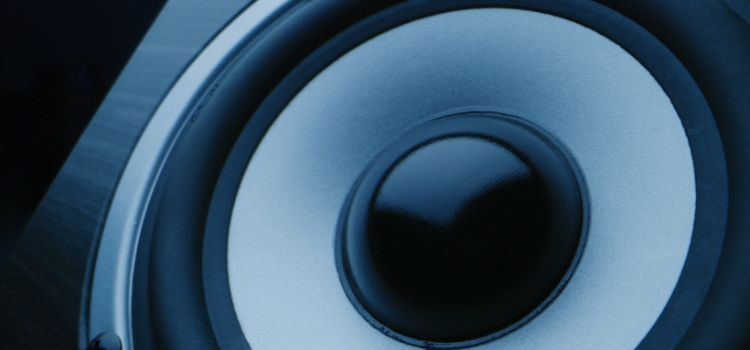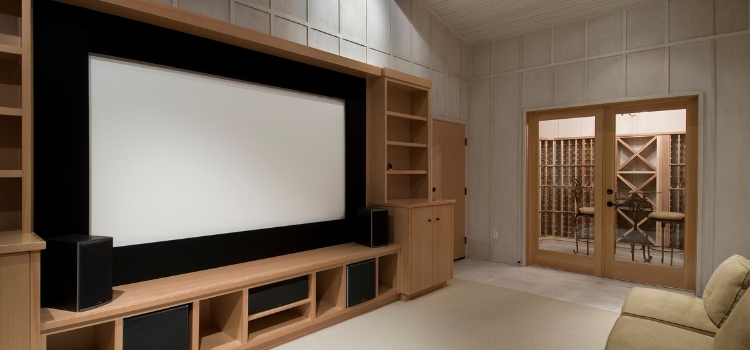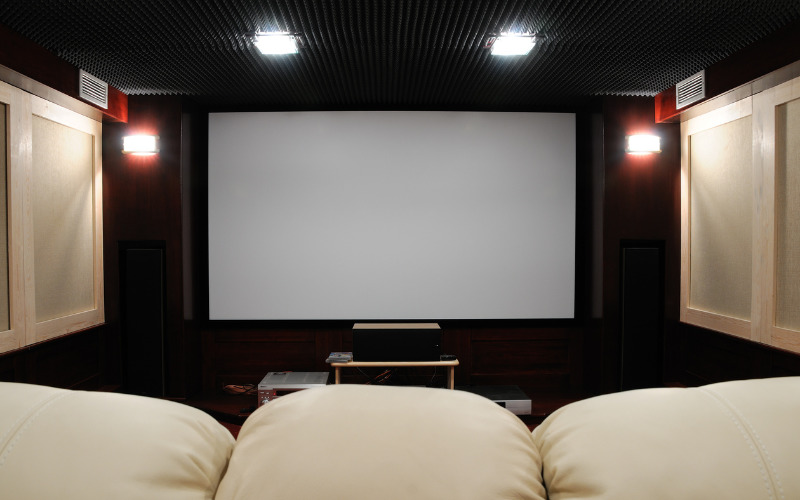When seeking the best subwoofer performance, things can get expensive. While the best subwoofers under $1,000 offer a ton of premium options, it’s important to know the cream of the crop. In this article, we aim to identify the top-tier powered subwoofer in this price range and explain the value they offer. You can find our top picks below followed by an extensive review of each option.
| Image | Product | Features | Price |
|---|---|---|---|
Best Overall  |
| 9.7 | Check Price |
Runner Up  |
| 9.5 | Check Price |
Best Compact Sub  |
| 9.1 | Check Price |
Best 15" Sub  |
| 8.8 | Check Price |
Best Value  |
| 8.6 | Check Price |
Table of Contents
Best Subwoofers Under $1000
SVS PB-2000 Pro
If you’re in the market for a high-quality subwoofer, you probably came across an SVS sub. And for a good reason. While SVS is synonymous with premium subwoofers, the SVS PB-2000 Pro is the king of serious bass at this price point. It only begins with an insane 550 RMS Watts of continuous power (1,500+ peak Watts). Most power subwoofers pale in comparison when it comes to power output. The result is a 12″ ported subwoofer with the power to shake walls, couches, and doors on multiple floors of your house. But this isn’t your run-of-the-mill boomy bass response. The SVS PB-2000 utilizes its Sledge DSP amplifier to deliver clean and powerful bass.
Frequency range is another key factor in subwoofer performance that the SVS PB-2000 Pro knocks out of the park. Any top-notch home theater system requires deep bass for a truly immersive experience. That means you’ll need a subwoofer to reproduce the lowest sub-frequencies common in movie scores. The SVS PB-2000 Pro is a hard-hitting sub that produces bass as impressively low as 16Hz. That’s just one of the reasons we feel the PB-2000 Pro is the best subwoofer under $1000 for home theater. That’s of course if you have the floor space to accommodate its 65-pound weight and large dimensions (20.9″ H x 17.3″ W x 23.6″ D). It at least looks the part of a premium sub with a premium black ash finish and superb build quality. Two 3-inch ports on the front of the PB-2000 Pro eliminate port noise and allow for flexible speaker placement.
The controls and features of the SVS PB-2000 Pro match and far exceed similarly priced subwoofers. That includes digital control via the SVS app for low pass filter, volume, and phase settings. The app control also adds functionality for a 3-band parametric EQ, port tuning, and more. The touch-controlled Intelligent Control Interface (ICI) lives on the rear panel for some onboard DSP adjustments. RCA and LFE connections are available for seamless integration with an AV receiver or amplifier. Wireless connectivity is also available along with RCA output. Automatic mode and sealed mode are two more of the many unique features the PB-2000 Pro has. The SVS PB-2000 Pro is an extremely powerful, accurate, and versatile powered subwoofer and our top pick as the best subwoofer under $1000.
Monolith M-12 V2
Monolith’s M-12 V2 is another beast of a 12-inch powered subwoofer for those seeking high-quality bass production. Its 900 Watt amplifier (500 RMS) also houses a DSP to optimize the M-12’s performance of accurate and powerful bass. The Monolith M-12 V2 is even THX Ultra certified. That’s a certification that requires testing to endure this subwoofer can achieve bass response at high volumes without distortion. THX Ultra certification is a benchmark that customers can lean on when building home theater systems with high sound quality. The Monolith M-12 V2 is a powered subwoofer that has bonafide home theater chops that extend to its great frequency range (17Hz-200Hz). Capable of deep bass at frequencies below 20Hz, the M-12 V2 brings action movies and blockbusters to life with rumbling bass you can feel in your chest. Its dual-ported enclosure is made with high-density fiberboard and strong internal bracing to reduce unwanted vibration. This all results in massive power output that produces powerful bass without a rattling cabinet and excessive port noise.
The high-quality material and premium build quality are evidenced by its 115-pound weight. Those with limited floor space should note this along with its massive footprint (24.8″ L x 16.7″ W x 22.8″ H). On the back of the Monolith M-12 V2, a rear panel house a plethora of controls and features. Tweaking for high-quality sound is easy with dials to control crossover frequency, polarity, and gain/volume. Switches to toggle between frequency and power modes (including Auto On/Off) are also available. As far as connections go, the Monolith M-12 V2 leaves no shortage of options to connect to your home theater system. Balanced and unbalanced inputs are available. Separate connections for RCA/LFE, XLR, and XLR Direct pass-through can all be utilized to link other speakers and audio equipment.
For those in search of a great subwoofer, the Monolith M-12 V2 offers great sound quality for those who want cleaner sound paired with powerful bass. It’s should be near the top of the list for those who want the best subwoofer under $1000 for home theater systems. Essentially an end-game quality subwoofer, the M-12 V2 is particularly equipped to produce amazing results for a large home theater setup.
SVS 3000 Micro
Good bass comes in many sizes and not every room size can accommodate a large 15-inch subwoofer. Enter the SVS 3000 Micro which is a compact subwoofer with power handling that might require a double take to believe. Despite its compact enclosure (10.9” H x 11.7” W x 10.7” D), the SVS 3000 Micro houses an amplifier pushing 800 Watts of continuous RMS power (2,500+ peak Watts) with an onboard DSP. That’s a 22-pound sub power output most subwoofers much larger in size fall way short of. SVS also miraculously packed two 8-inch woofers that fire in opposite directions. Those passive radiators within such a compact sealed enclosure make up one of the more innovative powered subwoofers in recent memory. The uniqueness of the SVS 3000 Micro doesn’t stop there. Those incredible power-handling specs also come with an equally amazing frequency response (23Hz-250Hz).
Sealed subs often appeal to those who want a powered subwoofer for music. They’re often capable of more slamming, punchy bass than their ported counterpart with less need to hit below 30Hz. The SVS 3000 Micro is the unicorn sub in a sealed box that’s compact and capable of hitting deep bass notes suitable for home theater. We love the powerful punch and tight bass response 3000 Micro. It’s a sealed sub with the power to shake and thump with much larger woofers. It adds a compact footprint that doesn’t require a lot of floor space. Versatile enough the thrive on a computer desk or in your home theater setup, the SVS 3000 Micro is a swiss army knife.
The SVS 3000 Micro is the best compact subwoofer at this price point with a piano gloss black finish that looks amazing too. LFE/RCA and wireless input connections are available in addition to RCA output. The same Intelligent Control Interface (ICI) from the PB-2000 Pro can be found on the rear panel, as well as extensive controls through the SVS app. The powerful, deep bass and versatile overall sound quality of the SVS 3000 Micro provide incredible value. It’s our top pick for the best compact subwoofer within this price range. It’s one of the best powered subs under $1000 for music and mixed-use cases.
Klipsch SPL-150SW
Many people opt for 12″ subwoofers when building a home theater setup. They tend to be a good mix between size and deep bass performance. But a larger 15-inch powered subwoofer is tempting for those in search of high-quality bass who have space available. If that sounds like you, we recommend the Klipsch SPL-150SW which has a great design and raw power to spare. With its built-in 800W amp (400 Watts RMS) and front-firing 15-inch woofer, the SPL-150SW is equipped to rumble our whole home. Its larger woofer allows for a wide frequency response (18-125Hz) that puts other subs to shame. The Klipsch SPL-150SW is simply one of the best subwoofers under $1000 for powerful bass. With deep bass that can hit very low, it’s great for those building an audio system to bring action movies and thrillers to life.
While we love the deep low frequencies of the Klipsch SPL-150SW, users must consider its size. The SPL-150SW has dimensions of 19.5″ (W) x 21.5″ (H) x 23.8″ (D) and weighs 75 pounds. Unlike smaller subs, advanced planning may be required to find the perfect placement and listening position. The Klipsch SPL-150SW should integrate well with your audio system if you can work out placement. Its front-firing flare port provides flexible placement and bass response with low distortion. The SPL-150SW also has a low pass crossover, Auto/Standby mode, gain/volume controls, and a phase switch. In addition to the usual LFE/RCA inputs, a WA port is available for a wireless connection. Most of our picks for the best subwoofer under $1000 are smaller subs, but the Klipsch SPL-150SW is a no-brainer too. It’s one of the few great 15-inch subwoofers in this price range. For a bass boost that’s deep and powerful, we love the raw power of the Klipsch SPL-150SW.
Polk Audio HTS 12
We love the premium options at this price point. But users can still find other subs we love that are more affordable. The Polk Audio HTS 12 is just one great example. Not only is the HTS 12 one of the best-looking powered subwoofers on the market. It deserves a mention when considering the best subwoofer under $1000 despite costing just over $500. With 400W of peak power (200 Watts RMS), it is underpowered compared to the more expensive options on this list. But the HTS 12 still excels in producing low frequencies with low distortion thanks to its power port.
Even with its lower power, the Polk Audio HTS 12 is still capable of rumbling and thunderous bass. For users who want more bass, its price point also makes a second sub much more affordable. The HTS 12 has a frequency response of 28 to 120Hz. While that is sufficiently deep, it’s not ideal for those who want to the deepest bass for home theater. An LFE/RCA connection means EQ settings can be controlled by your receiver. Alternatively, onboard controls for a low pass filter, gain/volume, and phase control are also available.
While we love the quality sound of the bass performance of the Polk Audio HTS 12, we understand it is not perfect. We outlined some of its shortcomings in our HTS 12 review. Its frequency response leaves a little to be desired. And it can’t match the power of other speakers on this list. But it’s still a good subwoofer and it makes a dual subwoofer setup much more affordable. The HTS 12 alone isn’t the best subwoofer under $1000. But customers considering a two-subwoofer setup can get amazing value by buying two of these.
Do I Need A Subwoofer?

If you already have a home theater system, it can be tempting to forgo a subwoofer. It’s important to note that you already get low-frequency production if you have floorstanding or bookshelf speakers. But those stereo speakers usually only effectively produce frequencies down to about 40Hz. That leaves a lot of sub-bass that’s not being produced. You’ll need a subwoofer if you want to produce close to the full frequency range of audio.
Without a subwoofer, users will miss out on a lot of the deep and punchy bass found in music. While more premium subwoofers can reach as low as 15Hz, there are more affordable options that can hit below 30Hz. Not having a subwoofer for bass production is even more of an issue for a home theater system. Movie scores contain more of those deep bass notes than music. These low sub-bass frequencies are the type of thunderous bass that really bring action movies to life. This is the type of deep bass you can hear and feel. Not only is it a key part of a movie score. It’s a key to an immersive surround sound home theater experience.
Researching The Best Powered Subwoofers

Power And Size
The size of the woofer and the wattage of the amp are key indicators for subwoofer performance. All things equal a subwoofer with 400 Watts RMS will hit harder than one with half as much power handling. The woofer size also heavily dictates the type of bass speakers will produce. For those who want serious bass production, you’ll want to focus on both. While power is extremely important, a larger woofer with an underpowered amp can still offer benefits (more on this later). So, how should users decide on the right subwoofer in regard to size and wattage? Shoppers will need to consider their use case.
A 12″ powered subwoofer tends to be the sweet spot for many. Some larger home theater rooms might be able to get away with a 12″ subwoofer, but it should probably have more than 500 peak Watts. Need a subwoofer for your office or computer desk? An 8 or 10-inch subwoofer with 200 peak Watts is a better fit.
Sound Quality And Deep Bass
Not all bass is created equal. The quality and type of bass are also important to consider for your use case. The deepest bass hit at lower frequencies (think close to 20Hz). Found a great subwoofer that hits below 20Hz with a 15″ woofer and excellent power output? If you need a subwoofer for your computer desk, it might not be right for you despite its amazing specs. Why? Let’s assume your main use case is gaming and music. That amazing deep low-frequency extension you’re paying for is really only utilized for movie soundtracks. And that 15″ subwoofer probably has a large footprint that will take up too much space on or around your desk. Smaller sealed subs are also usually ideal for the punchy and tight bass many prefer for music playback.
Even if the home theater is your main use case, you may not need or be capable of accommodating a 15-inch subwoofer. Not only can larger subs be overkill for smaller rooms. A subwoofer in a small room will actually sound deeper and louder. This is the reason you’ll often see subwoofer manufacturers specify slightly different frequency response capabilities for smaller spaces. While smaller subs can’t hit well below 30Hz, it’s typically not the case. Smaller subs that hit hard and deep will come at a premium for this reason.
Another consideration for quality sound in a subwoofer is accuracy. Some subwoofers excel by producing a cleaner sound when producing low frequencies. This can mean a few things. It could mean the subwoofer has a flat or more neutral bass response. The result would mean more accurate sound quality and bass response. Some will generally prefer this more accurate sound quality. Those with a home studio will require this accurate bass response. A cleaner sound can also mean low distortion and less boominess in your bass notes.
Features and Connectivity
While the job of a subwoofer may seem straightforward, a good subwoofer offers features to make the most of its capabilities. Your typical powered subwoofer will have an RCA/LFE connection and a few key onboard controls (low pass crossover, gain/volume, and phase control) at a minimum. Many subwoofers will additionally add other pretty cool features like a DSP (digital signal processor). A DSP is essentially the brains within a subwoofer that can optimize low-frequency performance on the fly. That includes allowing for additional features like room correction and custom EQ settings. Some subwoofers even offer additional control through an app or remote control. While some won’t need this, those who like to tinker will likely appreciate the extra flexibility.
Best Subs Under $1000: FAQs

-
What Is The Best Subwoofer For Sound Quality?
At this price point, the SVS PB-2000 Pro offers the best all-around sound quality. It’s a subwoofer capable of powerful bass in addition to deep sub-20Hz frequencies.
-
What Size Subwoofer Is Best For Bass?
There is no ideal size. Your particular use case is very important. Larger subwoofers are capable of deeper bass with less power. But a larger 15-inch subwoofer is not ideal for a small room or office space. While a 12-inch subwoofer is a nice sweet spot, a smaller sub may be more ideal for smaller spaces.
-
How Do I Make My Bass Sound Crisp?
Sometimes a subwoofer will have physical limitations that result in muddy bass or a lot of distortion. More premium subwoofers avoid this problem. It is possible to run into subwoofer issues including over-excursion or excess port noise when your sub is pushed too hard. This can happen when you attempt to push a subwoofer past its physical limitations.

Keith Collins has been writing for over 15 years for various publications. He’s a lover of music, home theater, and excellent sound quality. His fondness for technology in addition to his non-stop curiosity fuels his writing ventures.
